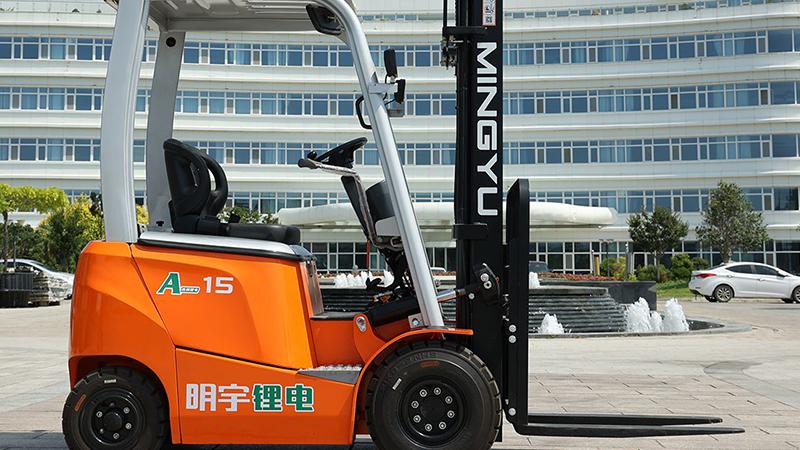The lifespan of an electric forklift is a critical consideration for businesses aiming to optimize their material handling operations while minimizing long-term costs and environmental impact. Typically, a well-maintained electric forklift can remain in service for approximately 15,000 to 20,000 hours of operation, which often translates to 10 to 15 years, depending on the intensity of use, the working environment, and the quality of maintenance practices. Unlike their internal combustion counterparts, which are often plagued by complex mechanical systems prone to wear and tear, electric forklifts benefit from simpler mechanics with fewer moving parts, leading to inherently greater reliability and longevity. The core components—the electric motor, controller, and drivetrain—are engineered for durability and can often outlast the forklift’s chassis and bodywork if properly cared for. However, the single most significant factor determining the overall viability and economic life of the machine is undoubtedly the health and performance of its battery. The battery is not just the power source; it is the heart of the electric forklift, and its lifecycle is intrinsically linked to the forklift's operational efficiency and total cost of ownership. Consequently, understanding the symbiotic relationship between the forklift and its energy system is paramount for any logistics manager or warehouse operator seeking to make a sound investment.
While the electric forklift itself is built to last over a decade, the battery has a considerably shorter lifespan and is considered a consumable item that will require replacement several times throughout the vehicle's life. The longevity of a forklift battery is primarily measured in cycles—one cycle constituting one complete discharge followed by a full recharge. The two most common types are traditional lead-acid batteries and modern lithium-ion (Li-ion) batteries. A high-quality lead-acid battery, subjected to rigorous but proper use and maintained under ideal conditions, typically delivers between 1,500 to 2,000 cycles before its capacity degrades to a point where replacement is economically justified (often around 80% of original capacity). In a single-shift operation, this equates to roughly 4 to 5 years of service. In contrast, advanced lithium-ion batteries boast a significantly higher cycle life, often exceeding 3,000 to 5,000 cycles, effectively doubling or even tripling the service interval and potentially lasting the entire lifespan of the electric forklift itself. This extended cycle life is a game-changer, fundamentally altering the total cost of ownership calculation. Furthermore, Li-ion technology offers advantages like opportunity charging (topping up the battery during breaks without causing harm), faster charging times, and zero maintenance, which further enhances operational uptime and reduces labor costs associated with battery watering and equalization charges.
A multitude of factors conspire to either extend or shorten the useful life of both the electric forklift and its battery. For the forklift, the operating environment is paramount. Consistently using the machine in harsh conditions—such as extreme temperatures, corrosive environments, or on rough, uneven surfaces—will accelerate wear on components like tires, mast rollers, and the electrical system. The severity of duty cycles is equally critical; a forklift constantly operating at or near its maximum load capacity will experience more stress than one used for lighter tasks. Most importantly, a rigorous and proactive maintenance schedule is non-negotiable. This includes regular inspections of brakes, hydraulics, and steering systems, as well as keeping the motor and controller clean and free of debris. For the battery, maintenance and charging habits are everything. For lead-acid batteries, improper practices are the primary killer. These include deep discharging beyond recommended levels, infrequent watering, skipping essential equalization charges, and exposing the battery to extreme temperatures. Using a smart, high-frequency charger that prevents overcharging and sulfation is crucial. Even for maintenance-free Li-ion batteries, avoiding exposure to temperature extremes and using the manufacturer-approved charger are key to preserving their health. Ultimately, the operator's role is critical; aggressive driving and improper use cause physical damage and place unnecessary strain on the entire system, including the battery.
The evolution of battery technology, particularly the rapid adoption of lithium-ion, is fundamentally reshaping the value proposition and lifecycle management of the electric forklift. While the initial purchase price of a Li-ion powered electric forklift is higher, the long-term economics are compelling. The elimination of battery maintenance, the reduced need for spare batteries and charging infrastructure (due to fast charging), and the extended cycle life directly lower the total cost of ownership. Furthermore, as sustainability becomes a core tenet of modern business, the environmental advantages of electric forklifts, especially those powered by Li-ion batteries, become significant. They produce zero emissions at the point of use and have a much higher energy efficiency compared to thermal engines. At the end of its long life, an electric forklift boasts high recyclability. The steel and components can be reclaimed, and the batteries, particularly lead-acid which have a well-established recycling pipeline, are nearly 100% recyclable. Lithium-ion battery recycling programs are also scaling up rapidly, ensuring these materials re-enter the manufacturing stream. Therefore, investing in a high-quality electric forklift and adhering to best practices in battery care is not merely an operational decision but a strategic one, promising a decade or more of reliable, efficient, and sustainable service.
Post time:Sep.18.2025



